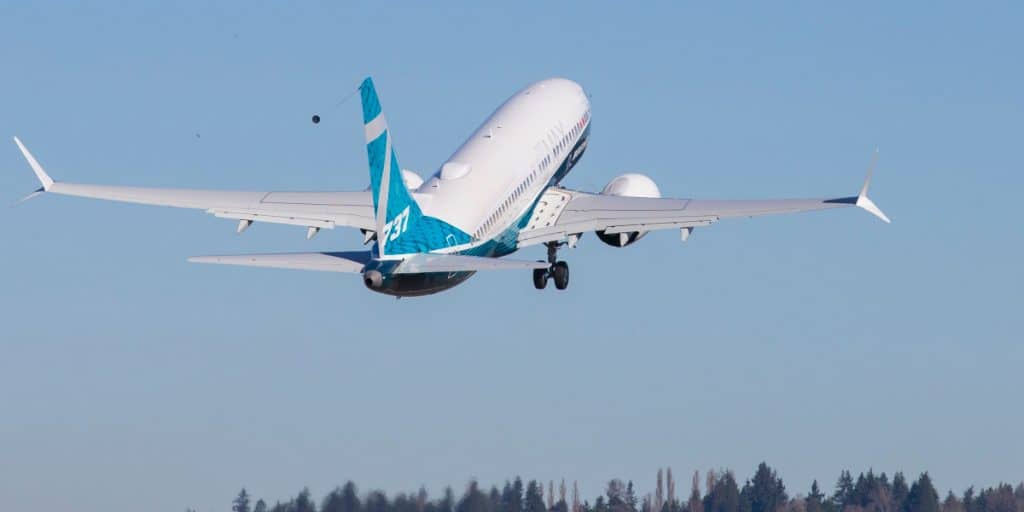In the first few days of the Dubai Airshow Airbus took a dominant lead ahead of Boeing for order announcements. More significantly, however, Boeing landed 30 firm orders for its troubled 737 MAX, which remains grounded across the globe as thousands of regulators are scrutinizing the health of the airplane.
Boeing had booked 10 orders from an unidentified airline customer for the 737 MAX 8 from SunExpress, a subsidiary of Lufthansa and Turkish Airlines, and 20 orders, divided equally between the 737 MAX 7 and the larger MAX 10. Air Astana, Kazakhstan’s low-cost air carrier, said it plans to order 30 of the single-aisle aircraft at a later date.
The Dubai Airshow orders indicate airlines remain assured of the basic safety and profitability of the aircraft.
The chief executive of SunExpress said the carrier, which is a faithful customer of Boeing, remains committed to converting its single-aisle fleet into the 737 MAX. It already has 32 orders.
“We are sure that Boeing will provide us with a secure, reliable, and productive aircraft,” said Jens Bischof, CEO of SunExpress, in a press release from the Chicago-based aircraft manufacturer. “It goes without saying, however, that this includes the model’s undisputed airworthiness, granted by all the relevant authorities.”
SunExpress did not respond to a request for comment.
The order is priced at a list price of $1.2bn. However, in their bare-knuckle battle for the single-aisle aircraft market, Boeing and competitor Airbus almost always cut the sticker award.
Analyst Scott Hamilton, who runs aerospace consulting company Leeham Co., tells Fortune, offers were generally as much as 60 percent before the grounding. “I’d say (Boeing agreed) maybe 5% or 10% more, maybe even more. This could easily be one of those offers you can’t reject.” Hamilton said that once the aircraft is back in service, it would probably only be a matter of weeks before orders return.
Boeing could possibly have ended the drought of the MAX order months earlier if it had been able to slash the price further, Richard Aboulafia, Teal Group vice president, tells Fortune.
Nonetheless, despite the slimness of the margin on narrowbody aircraft, Boeing is constrained in price cuts before selling at a loss. Such a step will threaten the potential pricing power of the company too, he says.
Anyways the car salesmen offer more or fewer mirror sweeteners, such as buybacks and tossing in additional facilities.
So far, Boeing’s 737 MAX order backlog has weathered the grounding, with only one stream of orders being exchanged or canceled for various types of aircraft. The firm has more than 4,500 unfulfilled orders for the Cap. Customers have put over 5,000 orders in total, making it the fastest-selling airplane in Boeing history.
Given that superlative, the 737 MAX is running a distant second to its rival, the Airbus A320neo, which had gathered 7,058 firm orders as of the end of October. More than 150 orders were applied to the A320’s backlog by the European airplane manufacturer. The A320 advanced past 737 last month to claim the title of the most famous jetliner in history.
The A320 has bagged 15,193 orders since its introduction in the 1980s through the end of October against 15,136 orders for Boeing’s 737 which was introduced in the 1960s.
Boeing has failed to get land orders for the MAX after the aircraft was grounded by regulators in March after the second fatal crash in five months. The crashes all claimed 346 lives.
IAG, one of the world’s largest airplane operators, announced in June that it plans to purchase 200 737 MAXes. On Boeing’s balance sheet, however, actions cannot be booked.
Boeing has since held off repeatedly as it wants the MAX to start carrying passengers over again. Regulators are not currently expected to approve the passenger service plane before early 2020. How many flyers will escape the Cap until it returns to service remains to be seen.
Check More Content Down Below –
Article Rewriter Tool – Generate Quality Articles | Trends Rewriter
Trump’s Campaign in 2020 is Terrified by Facebook’s Next Move. But Why?
